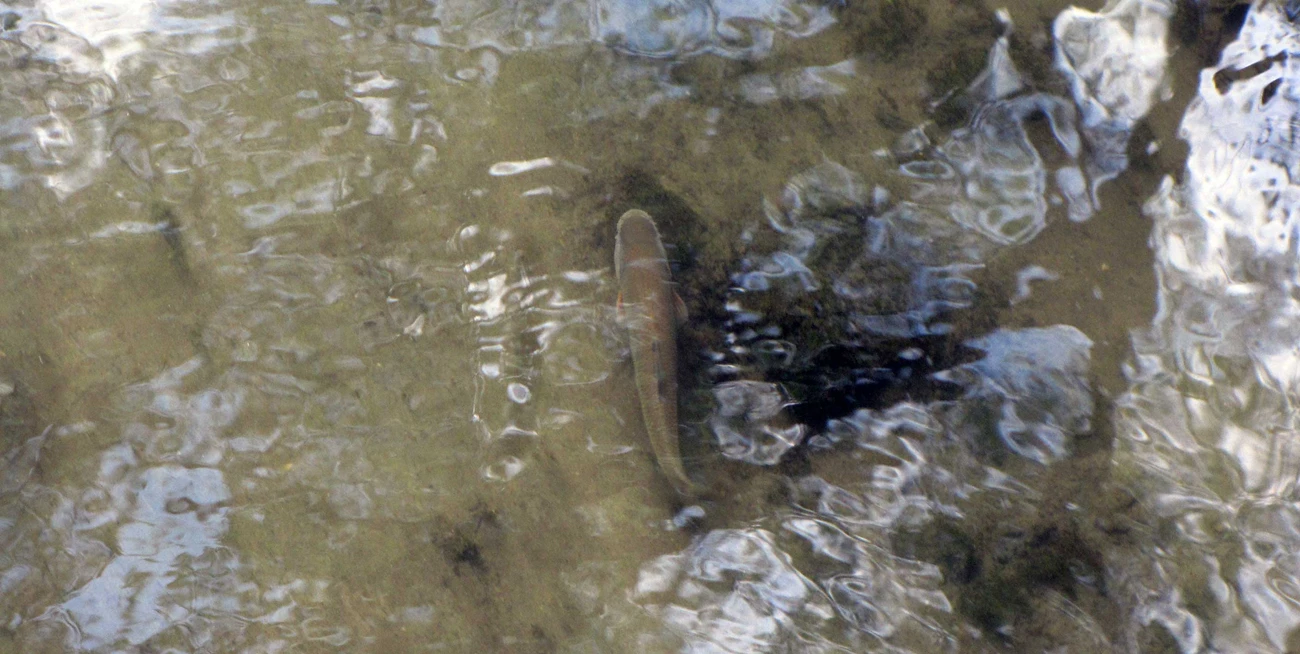Last updated: October 8, 2020
Article
Fish Communities at Herbert Hoover National Historical Site

NPS Photo by Adam Prato
Changes or shifts in stream habitat complexity and water quality often impact biotic communities, including fish. Many fish species are intolerant of habitat alterations and poor water quality; therefore, fish community composition is a useful biological indicator of long-term environmental conditions within a stream. Furthermore, a number of native fish populations in the Midwest are decreasing in abundance and distribution due, in part, to land use changes that contribute to habitat and water quality degradation. Protecting portions of streams on publicly owned lands may offer refuges for these declining species.
The purpose of fish community monitoring in Hoover Creek at Herbert Hoover National Historic Site is to determine the status and long-term trends in fish diversity, abundance, and community composition and relate these data to overall water quality and stream habitat condition. By using scientifically sound monitoring data, park managers are better able to manage and protect stream systems within the park.
Methods
For specific details on methods of site selection, fish sampling, habitat and water quality data collection, and data analysis see Dodd et al. (2008) and Dodd et al. (2013).
- Fish communities were sampled at Hoover Creek in 2008, 2011, and 2014 using a backpack electrofishing unit. All fish captured were identified to species, measured, and inspected for diseases or abnormalities prior to their release.
- Stream habitat data related to channel morphology and fish cover and bank/riparian conditions were collected in conjunction with fish sampling.
- Water quality characteristics (temperature, dissolved oxygen, pH, specific conductance, and turbidity) were also collected at Hoover Creek over a 24 hour period using a calibrated water quality datalogger.
- Fish community diversity, abundance, composition, and overall stream integrity (Index of Biotic Integrity or IBI) was assessed.
Summary of Findings
- A total of nine species were captured across the three years of sampling. The same eight species were found in 2008 as in 2011. In 2014, white sucker was not found as it was in previous years, however, a new addition, yellow bullhead, was captured.
- Community diversity, which ranges from 0 to 1, was relatively high for all three years. However, diversity in 2014 was found to be lower (0.69) than in 2008 and 2011 (0.78 and 0.79). The lower 2014 diversity resulted from high abundance of the Johnny Darter, (49% of the fish caught in 2014).
- Overall, stream integrity was rated as fair in all years with IBI scores increasing from 31 in 2008 and 2011 to 45 in 2014. A fair rating defines a stream that is dominated by, 1) species tolerant to poor water quality and habitat conditions, 2) generalist feeders, and 3) a few abundant species. Hoover Creek was dominated by Johnny Darter, Creek Chub, Blacknose Dace and Bluntnose Minnow (all tolerant or moderately tolerant species.
- Instream and bank conditions of Hoover Creek were typical of disturbed streams within agricultural watersheds. The stream bed was dominated by silt and sand substrates, and the highly-erodible silty banks were steep (slopes of > 60⁰).
- Water quality conditions were within federal and state standards (USEPA 2000 and IAC 2014) with the exception of average turbidity in 2008. Due to a rain event the night before fish sampling, Hoover Creek was turbid (Figure 1). However, turbidity prior to the rain event was below the USEPA standard of 15 NTU.
- Higher turbidity and low visibility conditions during sampling may explain the lower number of fish collected in 2008 compared to 2011 and 2014 (46, 369, and 427 fish, respectively). However, greater turbidity in 2008 did not affect species richness, diversity, or IBI scores which were similar to 2011.
Sources
USEPA 2000. Information supporting the development of state and tribal nutrient criteria for rivers and streams in nutrient ecoregion VI. EPA 822-B-00-017. U.S. Environmental Protection Agency. Office of Water. Washington, D.C.
